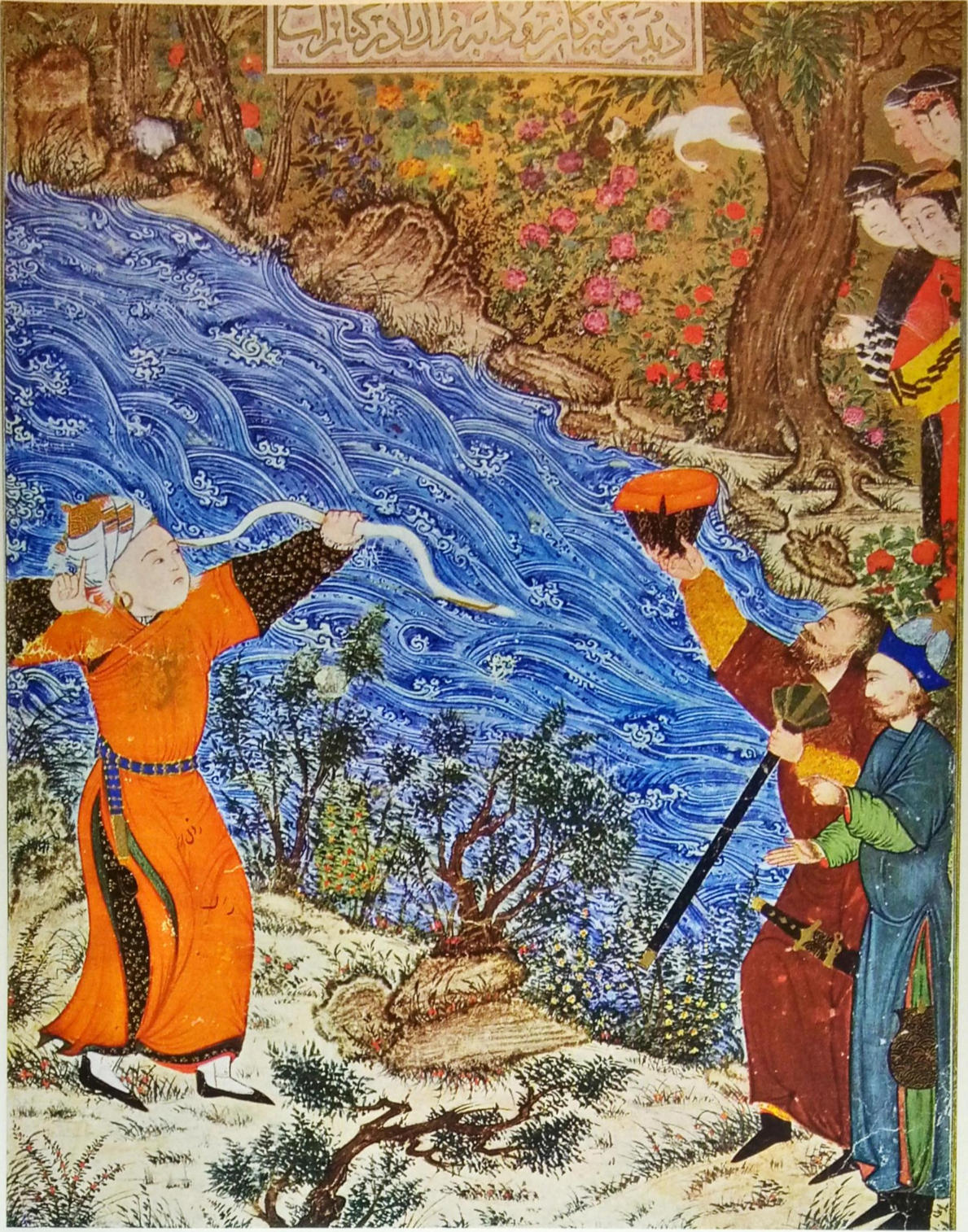
Shop Amazon - Create an Amazon Baby Registry
Zal shoots fowl
Illustrations of Jalayrids from a late 14th Century Shahnama

Image source: p.42, La Peinture Persane Ed. Albert Skira


Title: Zai shoots a bird
Category: Persian Painting
Object Name: Shah-nameh of 1370. Firdawsi. Shahnamah
MS title and folio number: Topkapi Sarayi Muzesi. Manuscript. H2153, fol. 65b
Detail: Painted for the Jalayrid Sultan Uways
Location: Iran -- Tabriz
Dynasty: Jalayrids
Date: c. 1370
Current Exhibition Site: Topkapi Sarayi Muzesi
Source: University of Washington Libraries
Zāl Shoots a Duck while Rudāba’s Ladies-in-waiting Watch (fig. 10)
Zāl and Rudāba hear such praises about each other that they fall in love. Rudāba reveals her secret to her five Turkish attendants who are at first flustered by the news but then decide to do all they can to help her. The next morning they go down to the bank of the river where Zāl has his camp. They approach Zāl’s tent with flowers in their hands. When Zāl finds out that they are from Rudāba’s court, he dashes to the river in his excitement, asks for his bow and arrow from his slave, shoots a duck flying across the river and brings in the dead bird. On the other bank of the river, the slave discusses with the women ways of bringing Rudāba and Zāl together.
The painting is divided diagonally in two by the river flowing across the middle. In the lower left, Zāl (with “Zāl” written in two places on his clothes) has released his arrow, and the bird is falling. He wears a long tunic of orange cloth and under it dark blue clothes decorated with gold stars. The ground under the men’s feet is not painted but is covered with greyish-green grass. The river, the banks of which are richly adorned with flowers, grass and small trees, is shown with regularly drawn breaking waves on its surface. Rudāba’s attendants are visible on the right, though partially cut off by the frame.
Although placed on the edge of the painting, the figure of Zāl dominates the scene. By the colors used in the clothing of the onlookers and their placement at the lower corner of the painting, our attention is immediately drawn to Zāl.
The subject of the painting is summarized in a few lines at the top.
Text source: "Four Istanbul Albums and Some Fragments from Fourteenth-Century Shah-Namehs" by Nurhan Atasoy, pp. 19-48 in Ars orientalis; the arts of Islam and the East Vol. 8 (1970)